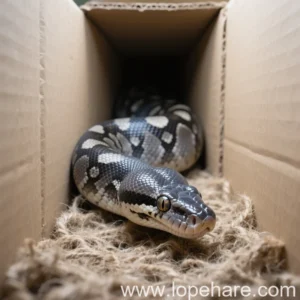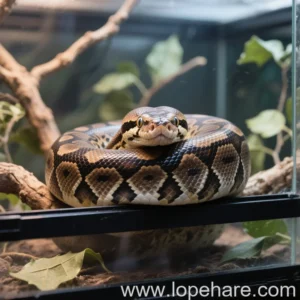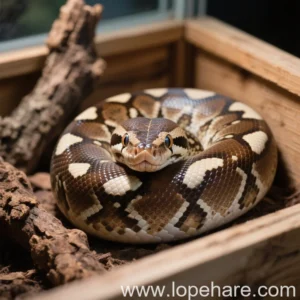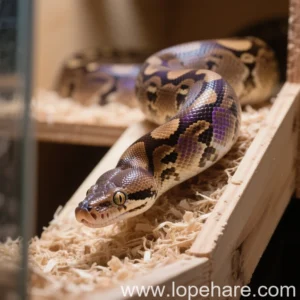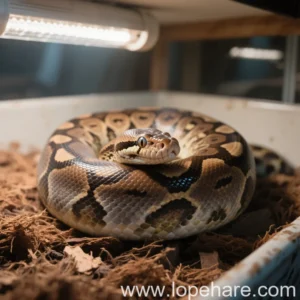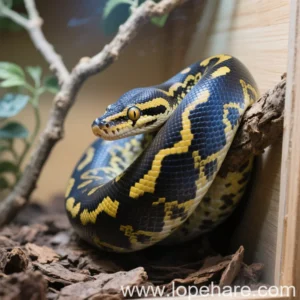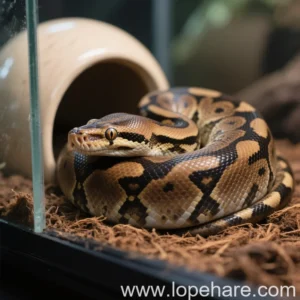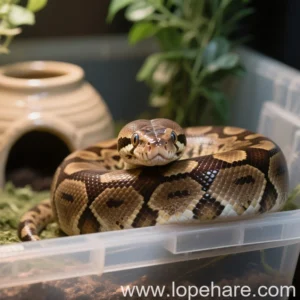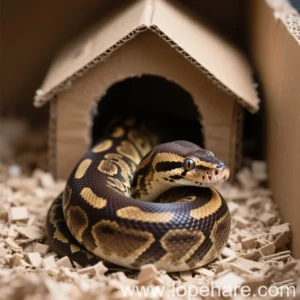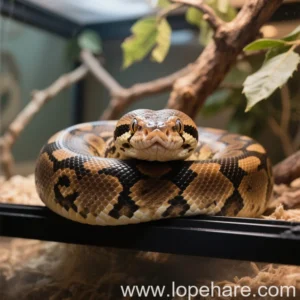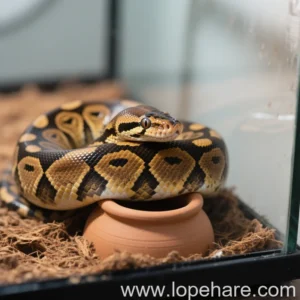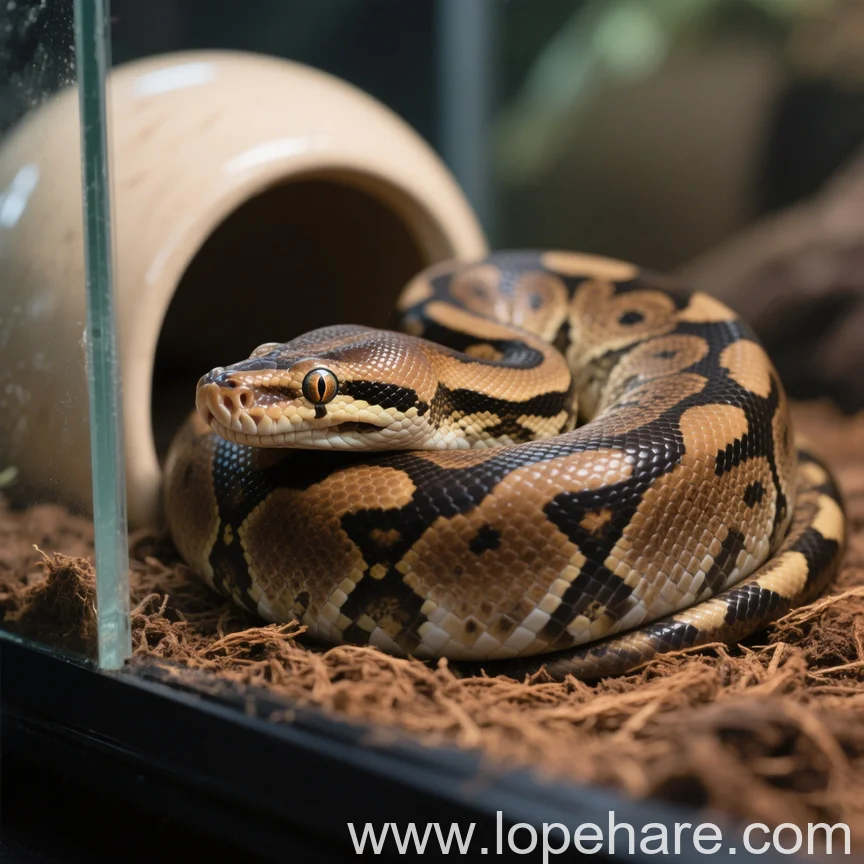
Reptile Behavior
Ball Python Body Language: How to Read Your Snake’s Mood and Needs
Here at lopehare, we understand that keeping exotic pets like ball pythons is a journey of continuous learning. One of the most rewarding aspects, yet sometimes challenging for newcomers, is learning to understand your pet’s subtle cues. Ball pythons might not bark or purr, but they are constantly communicating through their body language. Learning to read these signals is fundamental to ensuring their well-being and building trust.
Why Reading Ball Python Body Language Matters
Unlike mammals, reptiles don’t display emotions in ways we typically recognize. Their body language is often tied directly to their physiological needs, comfort levels, and perceived threats. By accurately interpreting their posture, movements, and behaviors, you can:
- Assess their stress levels.
- Determine if their environment is suitable (temperature, humidity, hiding spots).
- Anticipate defensive reactions to avoid bites.
- Identify potential health issues early on.
- Strengthen the bond based on understanding and respect for their needs.
Ultimately, it’s about moving beyond just providing basic care and truly understanding your snake as an individual.
The Classic “Ball” Posture
This is perhaps the most well-known behavior of *Python regius*, hence the common name “ball python.” When threatened, stressed, or feeling insecure, a ball python will coil into a tight ball, tucking its head protectively in the center. This posture presents the least vulnerable part of their body to a potential predator.
Meaning: This is a defensive posture. If your snake balls up when you approach or try to handle it, it’s a clear sign it feels threatened, scared, or uncomfortable with the interaction. Respect this signal and give it space.
Hissing and Striking (When & Why)
These are more overt defensive behaviors, though relatively rare in captive, well-socialized ball pythons compared to some other snake species. Ball pythons are generally timid.
- Hissing: A short, sharp expulsion of air. This is a warning signal, indicating the snake is feeling highly stressed or threatened and may escalate if the perceived threat doesn’t retreat.
- Striking: Usually a ‘bluff’ strike with a closed mouth, or a quick defensive bite if cornered or feeling cornered. This is typically a last resort after other warnings (like balling or hissing) have been ignored.
Meaning: These are unambiguous signs of extreme stress, fear, or defensiveness. If your snake is hissing or striking, you are pushing its boundaries significantly. Stop interaction immediately and re-evaluate the situation or environment.
Head and Neck Movements
A snake’s head and how it’s held can tell you a lot.
- Head Raised and Alert: When actively exploring, a ball python might raise its head and the front part of its body, flicking its tongue to sample the air. This indicates curiosity and engagement with its surroundings.
- Head Tucked Low: Often seen when the snake is resting or trying to remain inconspicuous. Can also be a sign of illness or extreme stress if they are refusing to move or lift their head.
- S-Shape Coil (front half): If the front portion of the body is coiled into an ‘S’ shape, it’s preparing to strike. This is a defensive or predatory posture.
Understanding Resting & Hiding Spots
Ball pythons are nocturnal and naturally seek secure, dark places to hide during the day. Their choice of resting spot provides clues.
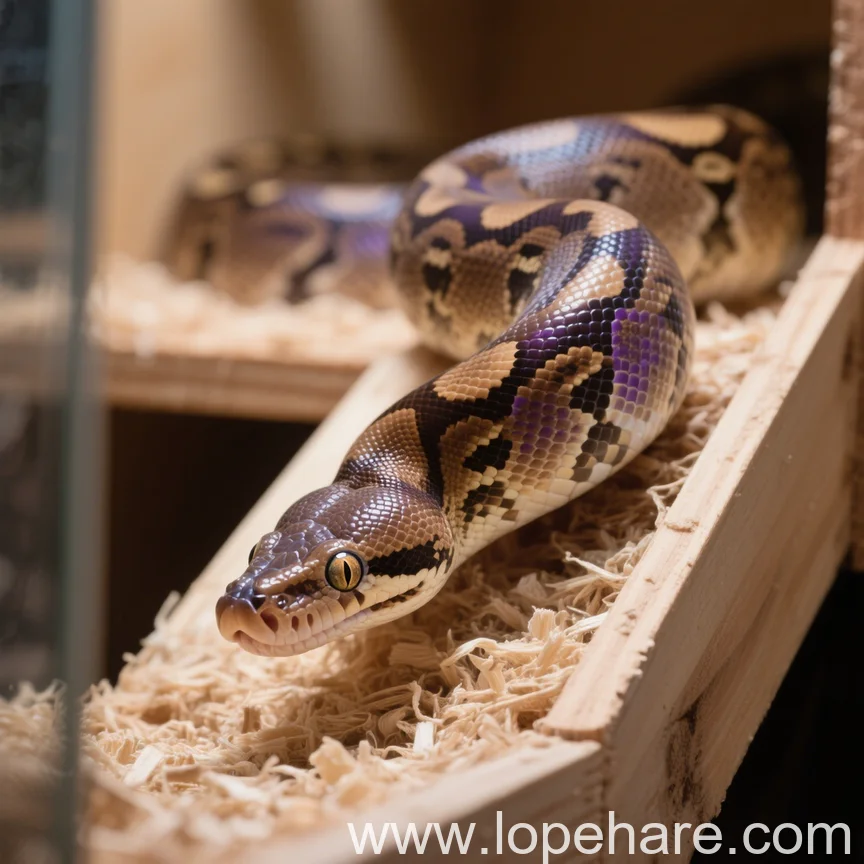
- Secure, Tight Hide: A snake spending all its time tightly coiled in its most secure hide might indicate it feels stressed, exposed, or its environment isn’t providing adequate cover elsewhere.
- Out in the Open (During Day): A ball python resting fully exposed during daylight hours can indicate several things: temperatures might be too low and it’s seeking warmth (especially under the basking spot), it might be uncomfortable with its hides, or in rare cases, it could be a sign of illness (seeking abnormal places).
- Exploring Hides: Moving between different hides suggests the snake feels secure enough to move around its environment.
Providing multiple hides (one on the warm side, one on the cool side) is essential for their sense of security and allows them choices based on temperature needs.
Posture While Basking or Moving
- Stretched Out Under Heat: A snake fully stretched out under the basking lamp is efficiently absorbing heat. This suggests it is comfortable and regulating its body temperature.
- Coiled Loosely: Resting coiled, but not in a tight defensive ball, indicates relaxation and comfort in its current spot.
- Exploring: Smooth, deliberate movement with tongue flicking suggests the snake is comfortable and investigating its territory. Jerky or frantic movements might indicate stress or discomfort.
Yawning and Other Mouth Behaviors
Seeing your ball python open its mouth wide can look alarming, but often it’s perfectly normal.
- Yawning: Snakes ‘yawn’ to realign their jaws after eating a large meal. This is completely normal and usually occurs within 24-48 hours post-feeding.
- Mouth Breathing/Gaping: Holding the mouth open or breathing with the mouth indicates difficulty breathing, often a sign of a respiratory infection (RI). This requires immediate veterinary attention.
- Bubbles from Nose/Mouth: Another sign of potential RI or other respiratory distress.
Recognizing Signs of Stress or Discomfort
Beyond the obvious balling or striking, subtler cues can indicate a stressed snake. Learning to spot these early signals is key to proactive care, a cornerstone of our philosophy at lopehare for recognizing ball python stress.
- Refusal to Eat: While ball pythons are notorious for going off-feed, prolonged refusal when husbandry is otherwise perfect might indicate stress, underlying health issues, or inadequate environment.
- Excessive Hiding: Constantly staying hidden, even at night, suggests the snake feels insecure.
- Frantic Rubbing: Repeatedly rubbing their nose or body against enclosure surfaces can be a sign of stress, mites, or discomfort.
- Abnormal Sheds: Incomplete or patchy sheds are often linked to incorrect humidity or underlying health/stress issues.
- Pacing: Repeatedly moving back and forth along the enclosure walls can indicate stress, discomfort, or a desire to escape (often due to inadequate space or environmental parameters).

What a Comfortable, Happy Ball Python Looks Like
A secure and healthy ball python will typically:
- Spend time evenly distributed between hides on the warm and cool sides.
- Come out to explore its enclosure, especially during the evening/night.
- Show interest in food during feeding days.
- Have smooth, complete sheds.
- Handle calmly (after they are used to you), uncoiling or moving slowly rather than immediately balling up.
- Maintain alert head posture and tongue flicking when exploring.
Practice and Patience
Learning to interpret ball python defensive posture and other behaviors takes time and observation. Spend quiet moments simply watching your snake in its enclosure without interacting. Pay attention to patterns: when it hides, when it explores, how it positions itself. Compare its behavior to the husbandry parameters you are providing. Are the temperatures correct? Is humidity adequate? Does it have enough clutter and hides to feel secure?
As founders of a platform dedicated to the unique needs of exotic pets, we emphasize that patience is key. Avoid forcing interactions if your snake is showing clear signs of stress. Building trust means respecting their signals and creating an environment where they feel safe.
Conclusion
Your ball python’s body language is its primary way of communicating its needs and feelings about its environment and your interactions. By becoming fluent in this silent language, you can proactively address potential issues, prevent stress, and foster a positive relationship with your scaly companion. It requires dedication and observation, but the health and comfort of your ball python are well worth the effort.
Citation:
Ball Python. In Wikipedia. Retrieved from https://en.wikipedia.org/wiki/Ball_python
